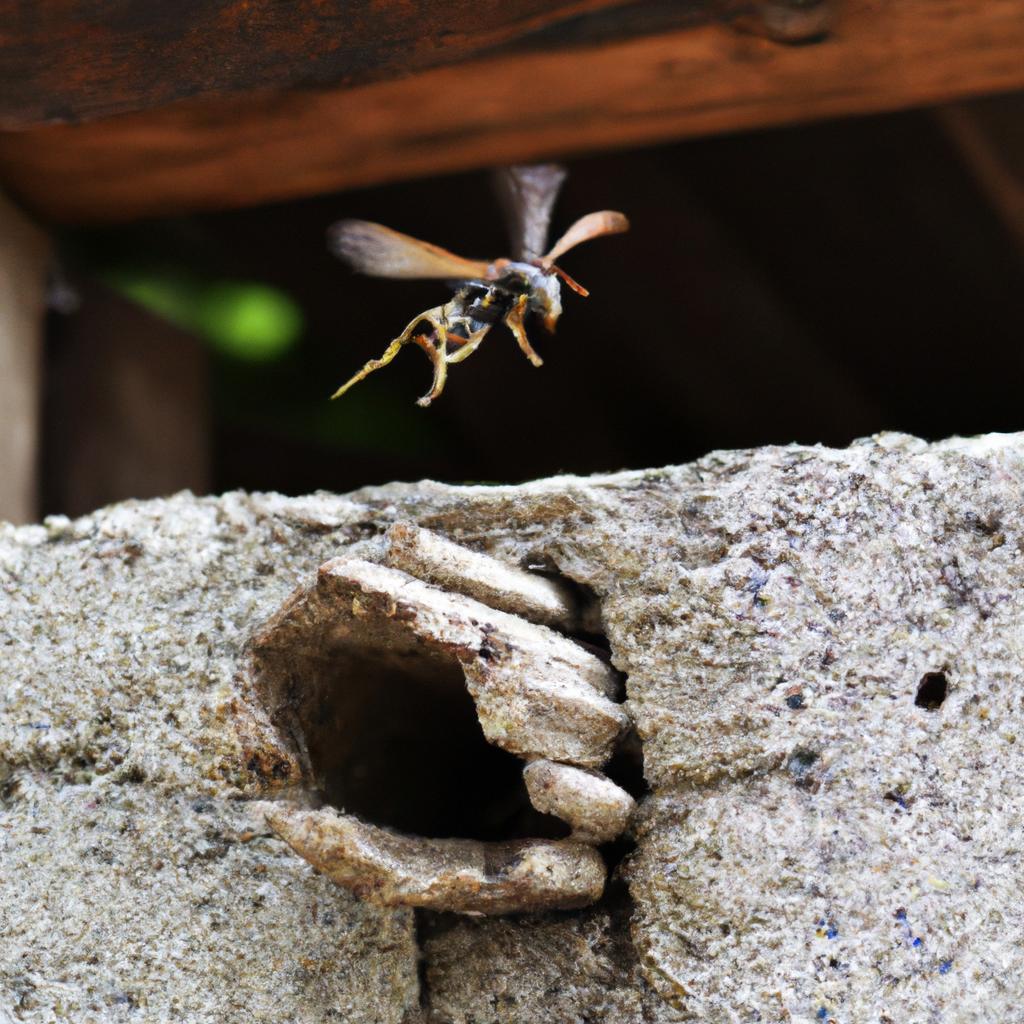Introduction

Wasp nests can be a nuisance and danger to humans due to their painful stings. Therefore, it is crucial to know how to get rid of them safely and effectively. One common question that arises after destroying a wasp nest is, “how long will it take for the wasps to leave?” This article will provide insights into the factors that affect wasp behavior after nest destruction, the immediate aftermath of nest destruction, and how long wasps stay after nest destruction.
Factors Affecting Wasp Behavior After Nest Destruction

Several factors can affect the behavior of wasps after destroying their nests. The type of wasp species, size, and location of the nest, time of day, and season are some of the factors that can influence their behavior.
Type of Wasp Species
Different wasp species have unique behaviors and reactions to nest destruction. Social wasps, such as yellow jackets and paper wasps, are likely to be more aggressive and protective of their nests. Solitary wasps, such as mud daubers and cicada killers, are less likely to be aggressive when their nests are destroyed.
Size and Location of the Nest
The size and location of a wasp nest can also affect their behavior after destruction. Larger nests tend to have more wasps, which can lead to a more significant threat of aggression. Nests located near human activity, such as homes or playgrounds, are more likely to provoke defensive behavior from the wasps.
Time of Day and Season
The time of day and season can also impact wasp behavior. Wasps are more active during the day and less active at night. During the fall season, wasps become more aggressive as they search for food to sustain their colonies before winter.
In conclusion, understanding the factors that affect wasp behavior after destroying their nests can help individuals anticipate their actions and stay safe.
Immediate Aftermath of Wasp Nest Destruction
After destroying a wasp nest, there will likely be angry and disoriented wasps flying around the area. It is essential to keep a safe distance from the site to avoid being stung. Wasps can become agitated and aggressive when they feel their nest is threatened, and they may attack in large numbers.
It is also recommended to wear protective gear, such as long sleeves, pants, and gloves, to protect yourself from stings. If possible, cover your face with a mask or veil to prevent wasps from flying into your mouth or nose.
How Long Wasps Stay After Nest Destruction
The duration of time that wasps stay after nest destruction can vary based on several factors. Typically, it takes a few hours to a few days for the wasps to leave the area. However, factors such as the size of the nest, the number of wasps, and the season can impact the length of time it takes for them to leave.
It is crucial to be patient and avoid disturbing the nest site during this time. If you see wasps still flying around after a few days, it is possible that there is a secondary nest nearby that needs to be destroyed. In this case, it is best to seek professional pest control services to ensure that all nests are eliminated safely and effectively.
In conclusion, understanding how long wasps stay after nest destruction is crucial for ensuring your safety and preventing future wasp infestations. By taking precautions and being patient, you can successfully eliminate wasp nests from your property and avoid the risk of painful stings.
Dealing with Remaining Wasps
After destroying a wasp nest, it is not uncommon to have some remaining wasps in the area. These wasps can be dangerous and aggressive, so it is essential to deal with them appropriately. Here are some effective methods for dealing with remaining wasps:
Use of Traps and Baits
Traps and baits can be an effective way of getting rid of remaining wasps. Commercially available traps can attract and capture wasps using pheromones or sweet liquid baits. Homemade traps using a plastic bottle and a sweet bait can also be effective.
Professional Pest Control Services
If the wasp infestation is severe or if the remaining wasps are too aggressive, it is recommended to seek the assistance of a professional pest control service. These professionals have the knowledge and equipment to deal with wasp infestations safely and effectively.
Avoiding DIY Methods That Can be Dangerous
Avoid using DIY methods such as gasoline or fire to destroy the nest or kill remaining wasps. These methods can be dangerous and can cause fires or explosions.
Conclusion
In conclusion, it is crucial to understand the behavior of wasps after destroying their nests. The time frame for wasps to leave after nest destruction can vary based on several factors, including the type of wasp species, size and location of the nest, time of day, and season. Dealing with remaining wasps can be challenging, but effective methods such as traps and baits or professional pest control services can help. It is vital to prioritize safety and caution when dealing with wasps and take steps to prevent future wasp infestations, such as sealing entry points in homes and removing food sources. At BeeKeepinglove.com, we recommend seeking professional assistance for any severe wasp infestations to ensure your safety and the safety of those around you.
